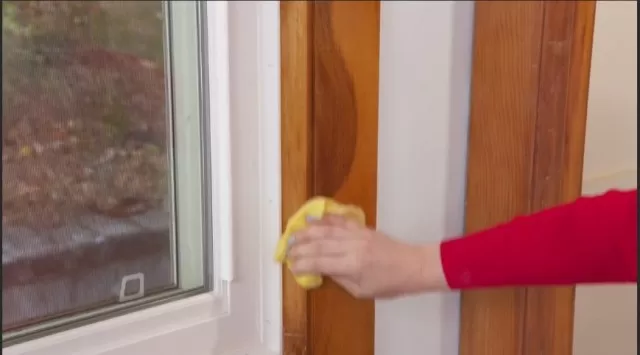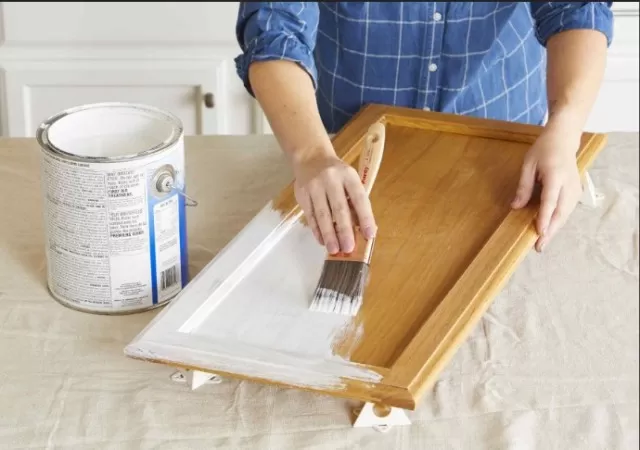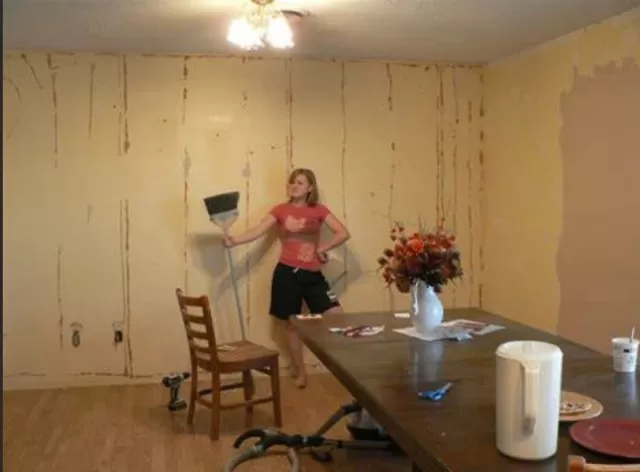Instances When Skipping Paint Primer Is a No-Go. The allure of owning a pristine, never-before-inhabited home is a dream cherished by many prospective homeowners.
However, this alluring vision should be evaluated with a discerning eye, as the excitement of new construction comes hand in hand with its share of potential drawbacks. Amidst the exhilaration of crafting a living space to your exact specifications, it’s crucial to acknowledge that a brand-new house doesn’t always guarantee an ideal living experience. As you tread the path of contemplating new constructionIn the realm of painting, priming is a non-negotiable foundation that sets the tone for the entire process. It’s an investment that yields exponential returns in terms of paint longevity, visual appeal, and satisfaction. By embracing the priming step, you’re not just ensuring the success of your project; you’re fostering a commitment to excellence that reverberates through every brushstroke. In essence, priming isn’t just a preliminary task—it’s the cornerstone of paint perfection.
“Applying Latex-Based Paint on Top of Oil-Based: Navigating the Compatibility Challenge”

Have you ever heard the old adage that oil and water don’t mix? This age-old wisdom surprisingly applies to the realm of painting as well.
If you’re contemplating the task of using latex paint, which is water-based, to cover a surface previously coated with oil-based paint, you’re likely to encounter a compatibility challenge. This isn’t merely a matter of preference; it’s about ensuring a durable and lasting finish.
Picture this: you’re standing in front of a wall coated with oil-based paint, and you’ve got a can of latex paint ready to transform the space.
However, before you dive into your painting endeavor, it’s essential to recognize that latex paint doesn’t naturally adhere well to the slick surface of oil-based paint. The two types of paint have different chemical compositions and properties, which can lead to poor bonding if not addressed appropriately.
So, what’s the solution? Enter the primer.
Just as a foundation is crucial for building a stable structure, using a primer is key to achieving a successful transition between oil-based and latex paints. By applying a high-quality primer specifically designed to promote adhesion, you create a bridge between these seemingly incompatible paints.
This not only enhances the bond but also ensures that your latex-based paint will showcase its true colors and longevity.
Think of the primer as a mediator, establishing a harmonious connection between these contrasting paints.
It’s like a handshake between old and new, allowing them to work together in unison. This additional step might seem like a minor detour in your painting process, but it significantly impacts the final outcome.
Your efforts will be rewarded with a finish that doesn’t just look good initially, but also stands the test of time, resisting peeling, chipping, and premature wear.
In the world of painting, knowledge truly is power.
Armed with the understanding that latex and oil-based paints require a bridge to coexist, you’re equipped to tackle your project confidently. Remember, when it comes to painting, a little preparation goes a long way in achieving a seamless, professional-grade result that enhances the beauty of your living spaces.
\”Enhancing Your Wall\’s Appearance: Painting on Top of a Skim Coat\”
.
Imagine your wall as a canvas, with its surface holding the potential for a flawless masterpiece.
This is where the technique of skim coating comes into play—a thin, artful layer of plaster or drywall compound that bestows a seamless and polished appearance upon the wall’s surface. However, as with any canvas, the right preparation can make all the difference in achieving a striking result.
A skim coat, though subtle in thickness, serves as the foundation for a pristine wall.
Its purpose? To create a smooth and even surface, erasing any imperfections that might have marred the visual appeal. Yet, this seemingly straightforward layer has a characteristic that must be addressed: porosity.
Just like a sponge absorbs water, a skim coat has an affinity for paint, absorbing it eagerly.
Enter a valuable technique to streamline your painting endeavor—priming.
Just as an artist sketches the initial lines before applying color to the canvas, priming a skim-coated surface sets the stage for a beautiful and efficient painting process. This essential step is not just about saving paint, but also about achieving an impeccable finish that truly captivates.
By introducing a primer to the equation, you create a protective barrier between the porous nature of the skim coat and the paint you plan to apply.
This barrier minimizes the paint absorption, ensuring that your chosen colors go on evenly, vibrantly, and with less effort. Essentially, you’re providing a solid groundwork that allows your paint to shine to its fullest potential, without the interference of uneven absorption.
Think of it as the underpainting—the layer that sets the tone for the final composition.
Just as a skilled artist layers their colors strategically, you’re layering the protection of a primer to enhance your paint’s performance. This meticulous approach might add a brief moment to your project’s timeline, but the benefits are far-reaching.
Ultimately, the journey of painting on a skim coat is a symphony of preparation and execution.
By acknowledging the nature of your surface and arming yourself with the knowledge of proper priming, you’re ensuring that your final masterpiece stands as a testament to your dedication and attention to detail. So, whether it’s a subtle hue or a vibrant shade you’re envisioning, remember: a well-primed canvas—no matter how thin—allows your colors to sing harmoniously, creating a wall that’s not just painted, but truly transformed.
\”Elevating the Aesthetics: Transforming Unfinished Wood with Paint\”

Imagine a canvas of raw, unfinished wood—an untouched, rustic beauty that holds the promise of a transformative masterpiece.
Yet, painting on this natural substrate is a delicate art that requires careful consideration. Unfinished wood, with its porous texture and intricate grain, presents unique challenges to achieve a flawless finish.
If you’re aiming for perfection, remember this golden rule: prime before you paint.
Unfinished wood possesses a captivating quality, but its absorbent nature can be both a blessing and a challenge.
Much like a sponge, the natural fibers of the wood eagerly soak up paint, leading to uneven coverage and possibly altering the desired hue. Moreover, the intricate dance of the wood grain can introduce a touch of unpredictability to your painting endeavor, potentially leaving you with an inconsistent final appearance.
But fret not, for a solution lies within the realm of preparation—a secret weapon known as primer.
Think of primer as the artist’s palette, a blank canvas upon which you create your masterpiece. Applying primer to unfinished wood serves as a foundation that levels the playing field.
It bridges the gap between the absorbent wood and the paint, offering a consistent surface for your colors to shine.
In the realm of aesthetics, primer plays the role of both curator and protector.
It curates an even surface, camouflaging the variations in the wood’s texture and promoting a uniform finish. Simultaneously, it shields the wood from excessive paint absorption, ensuring that your chosen colors appear vibrant and true to their intended shade.
With primer, you’re not merely painting; you’re crafting a refined work of art.
Consider the process akin to preparing a canvas for a masterpiece.
Just as a painter layers their strokes to build depth and character, priming your unfinished wood offers layers of protection and a canvas for your creativity. This extra step in your painting process might seem minor, but its impact is monumental.
So, the next time you’re faced with the allure of unfinished wood and the desire to paint it to perfection, remember the significance of priming.
By welcoming primer into your artistic journey, you’re not only transforming the wood—you’re elevating its essence, turning it into a curated masterpiece that defies the challenges and captures the true potential of your vision.
\”Transitioning Hues: Mastering the Art of Painting Over Dark Colors\”
In the ever-evolving landscape of interior design, trends come and go like seasons, and Paint Colors are no exception.
While the allure of dark interior shades has captivated many in recent years, the winds of change are inevitable. When the time comes to embrace a lighter aesthetic, a strategic approach is vital. Enter the unsung hero of seamless transitions: primer.
Picture a canvas that has been imbued with a rich, dark hue—an expression of the past era’s sophistication.
As you embark on the journey of transformation, the task of painting a lighter shade over this darkness presents its own set of challenges. The sheer nature of light color against a dark backdrop demands meticulous attention.
Without the right technique, the old color might stubbornly peek through, altering the new shade’s intended brilliance.
Yet, the solution is elegantly simple: prime before you paint.
Think of primer as a bridge between the past and the present, a mediator that paves the way for a harmonious transition. Applying primer to the dark canvas serves as a neutral foundation, ensuring that the old color remains hidden beneath the new layers of paint.
This not only saves you the hassle of multiple coats but also preserves the integrity of your chosen lighter hue.
Consider primer as a conductor orchestrating a symphony of colors.
It sets the stage for your new shade to shine vibrantly without the echoes of its predecessor. With primer, you’re not merely covering; you’re creating a fresh canvas that’s receptive to your artistic vision, free from the constraints of the past.
Priming isn’t just about convenience; it’s an investment in aesthetics.
By reducing the number of required paint coats, you’re not only saving time but also cutting down on costs. This efficient strategy allows you to focus on refining the details of your space, crafting an environment that seamlessly embraces the changing trends while reflecting your personal style.
So, as you embark on the journey of transitioning from darkness to light, remember the transformative power of primer.
By harnessing this tool, you’re not just painting; you’re curating an exquisite transition that brings together the old and the new in a symphony of color and design.
\”Elevating Your Walls: The Art of Painting Over Wallpaper\”

Imagine your walls as storytellers, each layer of wallpaper sharing a chapter from the past.
But as trends evolve and your style transforms, a fresh coat of paint becomes the brushstroke that redefines your space. Yet, the task of painting over wallpaper is an intricate dance that demands careful consideration—a dance where primer takes center stage.
The canvas in this scenario is the wallpaper, adorned with its own unique patterns and memories.
While painting over wallpaper might seem like a simple endeavor, the truth lies in the details. The wallpaper’s texture, patterns, and adhesive nature pose challenges that can’t be overlooked.
That’s where the role of primer becomes essential.
Primer is the unifying force that bridges the gap between the past and the future, creating a seamless surface for your chosen paint.
When you apply primer before painting over wallpaper, you’re essentially creating a solid foundation that promotes adhesion, ensuring your paint adheres uniformly across the varied textures of the wallpaper. This extra step safeguards against the potential pitfalls of paint unevenness and peeling—a testament to your commitment to achieving a polished finish.
But what if you’ve already taken the bold step of removing the wallpaper? Even then, your journey isn’t complete without primer.
Wallpaper removal can leave behind nicks, scars, and imperfections on your walls. These remnants of the past, while poetic, don’t align with your vision for a smooth, flawless finish.
By priming the wall, you’re addressing these battle scars, offering a rejuvenated surface that stands as a testament to your dedication to perfection.
Think of primer as the curator of your walls’ story.
Just as a museum prepares its exhibits with meticulous attention to detail, you’re preparing your walls for their transformation. With primer, you’re not just erasing the past; you’re crafting a canvas that’s ready to embrace your new color palette with open arms.
In the realm of aesthetics, primer is the magician’s assistant, making imperfections disappear and laying the groundwork for magic to happen.
So, whether your canvas bears the remnants of wallpaper or has been stripped to its essence, remember the significance of primer. It’s the secret to your space’s rebirth—a rebirth that’s rooted in the past but destined for an awe-inspiring future of color, style, and expression.
*The information is for reference only.